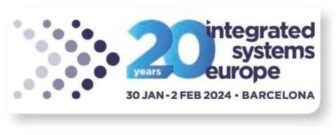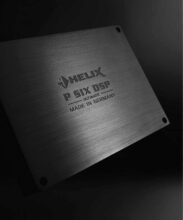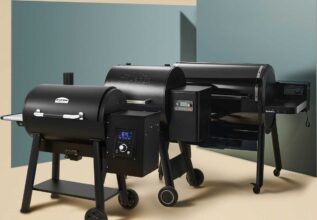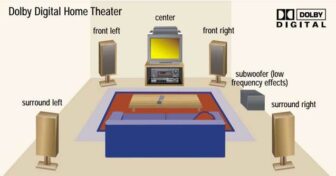15 hidden Windows tools and tricks
These valuable but often overlooked tips can streamline your workflow.
Delve into Windows’ hidden abilities
Windows is so deep and flexible that many of us don’t utilize its more powerful tools, whether from unawareness or forgetfulness. But a universe of tools and tricks lies within Internet Explorer, the Start button, and elsewhere. We’ll refresh your memory with some classic Windows power tips.
GodMode 1/15
The GodMode developer tool collates the operating system’s far-flung customization options into a single location. Important warning: Windows Vista users should not use GodMode, as it may immediately render the system unstable.
Right-click the Windows desktop and select New ► Folder. Name the folder GodMode.{ED7BA470-8E54-465E-825C-99712043E01C} — you can replace “GodMode” with any other name, but you must enter the period and what follows exactly. The folder icon will switch to the Control Panel icon. Dive into our tutorial for deeper GodMode tricks.
Problem Steps Recorder 2/15
This tool creates an HTML slideshow of your actions so you can show your IT admin or resident PC geek exactly how you ran into a problem. To open Problem Steps Recorder, search for psr in the Windows 7 Start menu or Windows 8 Start screen.
Windows Reliability Monitor 3/15
Windows Reliability Monitor shows all the problems Windows has encountered in a chronological chart, which you can sort and click through. The tool is especially handy for tracking down programs that may be causing weird crashes.
To open Reliability Monitor, open the Control Panel and head to System and Security. Choose Review your computer’s status and resolve issues (under Action Center). Then go to Maintenance View reliability history (under “Check for solutions to problem reports”).
Get a power efficiency report 4/15
Windows can give you a detailed report on your laptop’s power efficiency. Search for Command Prompt via the Start menu (Windows 7) or Start screen (Windows 8). Then right-click the Command Prompt result and select Run as administrator. Enter powercfg -energy -output FolderEnergy_Report.html in the Command Prompt, replacing “Folder” with the file path to your chosen folder for the report.
Windows will analyze things for a while, and then spit out a browser-readable Energy Report, offering suggestions for optimizing power performance.
Encrypt your files 5/15
Keep your files safe even if someone hacks or steals your PC. Microsoft’s BitLocker—built into Windows Vista or 7 Ultimate, Windows Vista or 7 Enterprise, and Windows 8 Pro or Enterprise—can encrypt an entire drive.
BitLocker has some special hardware requirements and caveats—most notably, you don’t want to lose the recovery key that lets you decrypt all your data. Check out our beginner’s guide to BitLocker
Calibrate the display 6/15
Third-party display calibration software can cost an arm and a leg. Fortunately, Windows includes a calibration tool, tucked into a corner of the Control Panel.
From the Control Panel, select Display and choose the Calibrate color option in the left pane. Find details on using the tool in our guide
Make Windows play nice with high-DPI displays 7/15
Super-high-resolution displays are becoming the norm these days. Unfortunately, Windows still suffers from scaling issues with pixel-packed displays, often making text appear small or blurry.
To fix this, try tinkering with Windows’ global scaling options.
Open the Control Panel and head to Display * Custom Sizing Options. You can change scaling by a percentage or via a ruler tool. The Display page also offers scaling options for text alone.
Schedule digital tasks 8/15
Task Scheduler helps you set schedules for running Windows tasks such as backups, as well as create complex task scripts that run at specific times. Search for Task Scheduler via the Start menu or Windows 8 Start screen, and then select the Schedule tasks option. To create basic tasks, explore the Check Disk and Disk Cleanup sections of our task automation guide (gQ.pcwQrld.com/taskautQ). For more advanced tasks, see our how-to (gQ.pcwQrld.com/tasksched).
Tweak the programs that start at boot 9/15
Many programs run at startup by default, slowing down the boot process. Windows includes tools for manually selecting which programs start up alongside the operating system. Windows 8 offers the Startup tab in Task Manager (previous versions of the OS make you jump through more hoops). Press <Windows>-R to bring up the Run command, and then search for msconfig and open the Startup tab. You can eliminate common offenders such as Steam or iTunes.
Force Windows to show all your drives 10/15
By default, Windows’ File Explorer won’t show empty drives, which can be a hassle when you’re fiddling with SD cards or flash drives. But you can force the issue.
Open File Explorer. In Windows 7, press <Alt> to bring up the top menu, and then head to Tools •Folder Options • View. Under Advanced Settings, uncheck the box next to Hide empty drives and click OK. In Windows 8, open File Explorer’s View tab and open Options • Change folder and search options. Look for the same Hide empty drives option. You can also opt to show hidden files and folders.
Handy hotkeys 11/15
Here are a few shortcut gems fsee no.pr.world.com/kslist for more).
<Windows>-left- or right-arrow key to pin the current window to the left or right screen edge, respectively <Windows>-M to minimize all desktop windows <Windows>-R to open the Run command <Windows>-X to open Windows 8’s Quick Access Menu <Alt>-<Tab> to switch between open programs
Put windows in your Windows 12/15
Virtual machines, which allow you to run sandboxed instances of operating systems in a standard window in Windows, are useful when you need a separate OS for software security, compatibility, or testing purposes. The Pro and Enterprise versions of Windows 8 support Microsoft’s Hyper-V virtual machine manager. To install it, from the Control Panel, head to Programs ■* Turn Windows Features on or off and then check the Hyper-V box and click OK. Reboot after installation.
Tailor your taskbar 13/15
The Windows taskbar offers a wealth of customization options for power users. Right-click on it and select Properties. You can adjust the taskbar’s position, autohide it, add toolbars, and more. See our “Hassle-Free PC” column on the subject foo.pcworld.com/taskbarf.
Windows 8’s Quick Access menu 14/15
Windows 8 may have killed the Start menu, but it didn’t leave power users completely stranded: Right-click the lower-left corner of the operating system screen for the Quick Access menu, which provides a slew of helpful power tools.
Restore lost options to Windows 8 15/15
Windows 8 and 8.1 removed some helpful legacy desktop options— most notably the Start menu and, in Windows 8.1, Library quick links for File Explorer (learn more at go.pcworld.com/81out).
Microsoft plans to revive the Start menu (go-pcworld.com/ startback). but for now, you’ll have to resort to a third-party tool (go. pcworld.com/toolstart). Restoring Libraries to Windows 8.1 is easier. Just open File Explorer, head to View – Navigation pane, and select Show libraries.






